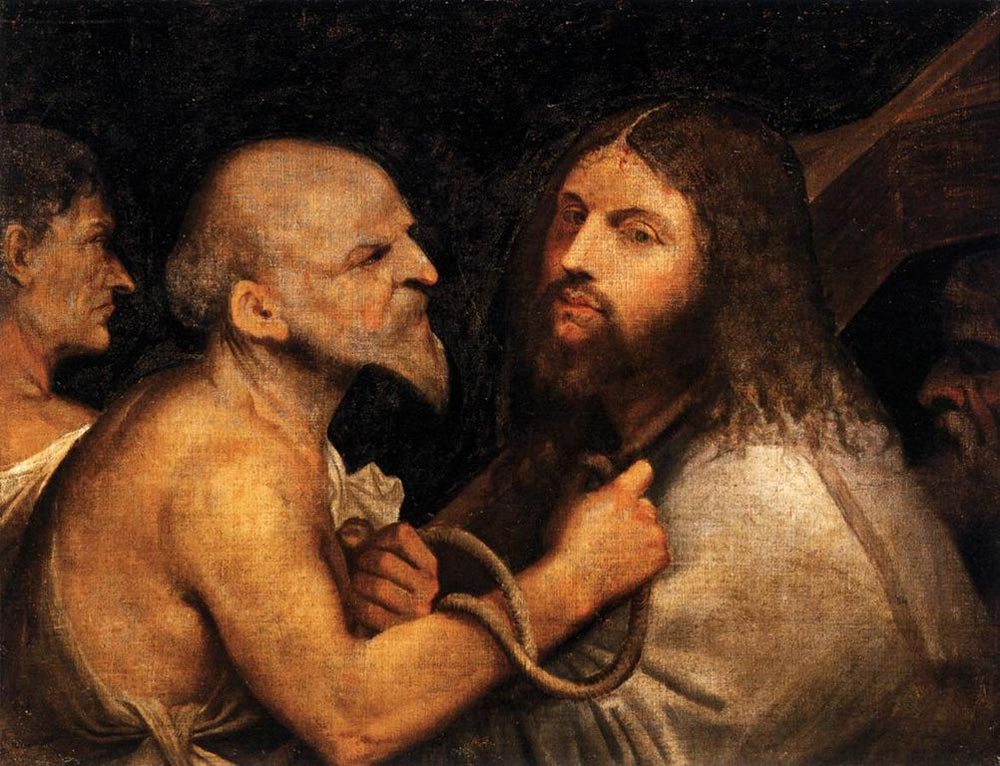| Christ Carrying the Cross | |
|---|---|
 |
|
| Artist | Titian or Giorgione |
| Year | c. 1508-1509 |
| Medium | Oil on canvas |
| Location | Scuola Grande di San Rocco in Venice, Italy |
| Dimensions | 28 in × 36 in |
| 71 cm × 91 cm | |
| Famous Paintings by Titian | |
| Rape of Europa | |
| Sacred and Profane Love | |
| Pastoral Concert | |
| The Assumption of the Virgin | |
| Christ Carrying the Cross | |
| The Flaying of Marsyas | |
| Allegory of Prudence | |
| The Worship of Venus | |
| Self-Portrait | |
| View Complete Works |
Around the year 1508 or 1509, the master Renaissance painter Titian painted an oil painting that is known as Christ Carrying the Cross. The current home of the work is the Scuola Grande di San Rocco, an annex to the Church of San Rocco in Venice, Italy. The painting has always been prominently displayed in either the church or the school, one of those rare cases for a relatively major work by a master. It is a relatively small canvas, a little less than a square yard in area, and it was apparently mounted in the church and was an object of veneration.
Mysteries
The actual origins of the painting are somewhat mysterious, and it has even been attributed at times by various historians of art to another Italian painter, Giorgione. Both painters were in an artists’ guild that was connected to the school and the church, both were active in the same era and place, and it is likely that the work was painted expressly for the institution. Another mystery about the oil painting is that it was said to have miraculous curative abilities, having been written about in many historical narratives. Pilgrims would pray in the church at a side altar where the painting was hung, and reported being cured of ailments.
Composition
The overall mood of the work is somber and dark. The brightest colors are dull flesh-tones, and the palette is dominated by various shades of brown. Against an almost black background, Christ is shown in semi-profile carrying the cross on his shoulder. As he gazes off to the left, an angry looking executioner tightens a noose of rope around his neck, and another figure slightly behind the executioner looks inwards behind the scene. The composition is in a style that was innovative at the time, a close-up view that eschewed perspective and depth for intimacy and detail. Characteristically for Titian, the painting is full of action, and repose seems far away for the characters depicted.